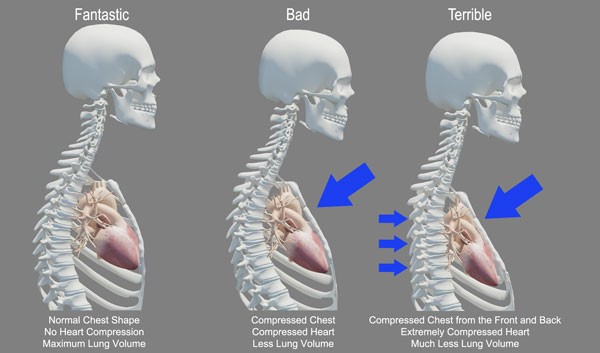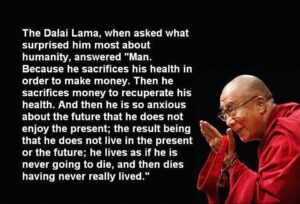How ELDOA’s Increase Spinal Mobility And Get Rid Of Neck And Shoulder Pain
- Do your shoulders slump and round when you walk, sit, or stand?
- Do you have trouble keeping your chest up when squatting?
- Do you get lower back or neck pain when doing twisting or rotational movements?
- Does it hurt lifting heavy things off the ground?
- Have you resigned yourself to living with that nagging rotator cuff pain that flares up during workouts and in bed?
If you answered “yes” to any of those (and most people will answer yes to at least one), you may have poor thoracic spine mobility. Even if you don’t notice any of the symptoms leaping out at you, it never hurts to get more mobility, especially in the thoracic spine. And establishing good habits by actively maintaining and training mobility, as opposed to being content with what you have (even if it’s not optimum), is always a good move.

After the hips, thoracic spine mobility is probably the most crucial aspect of mobility. At least with the hips, though, people can identify them and grasp the concept of hip mobility just by reading text on the computer. Sticking your hips back is pretty self-explanatory. What about the thoracic spine? It’s a bit more nebulous.
Do you know how to use your thoracic spine? Are you even aware that it exists? It’s not that people ignore the thoracic spine willfully; it’s that they’re unaware of any distinctions between spinal and lumbar vertebrae. They know about the spine, and imagine it to be a uniform vertebral column, equally capable of bending, twisting, and rotating along its length. This is totally understandable. “Spine” is what we hear, not “thoracic spine” or “lumbar spine” or “cervical spine,” but it’s much more than that.
The human spinal column is composed of five segments: the cervical spine, which extends up the neck to the base of the skull; the thoracic spine, which encompasses the shoulder and chest area; the lumbar spine, also known as the lower back; the sacrum; and, finally, the coccyx, or tail bone. Each performs a different role. Each has different capabilities, different functions. Most importantly, each segment of the spine is designed for a certain range of motion.
The thoracic spine is built for rotation, flexion, and extension. It is highly mobile – or, rather, it has the potential for lots of mobility. Because of its mobility, the thoracic spine must be used, must be moved. But it has to be known. If people are unable to visualize and feel the movement of the thoracic spine, or if they’re unable to even grasp the concept of its existence, they’ll just attempt to twist, rotate, flex, and bend with something familiar to them: the lumbar spine. That’s bad news.
The lumbar spine is built for stability. It’s supposed to support the weight of the body (plus any added weights) and resist excessive rotation and twisting. It remains stable and acts as a conduit for power generated by the hips and fed to the mobile thoracic spine. It is not meant to twist and bend. It can move, obviously, but it’s not meant to be wildly mobile. It’s meant to be solid, reliable.
You’ll find that an immobile thoracic spine isn’t just bad for the vertebrae themselves. It’s bad for your lower back and your shoulders, too. In fact, you’ll rarely feel actual pain along the twelve vertebrae that comprise your thoracic spine. Instead, your lower back will take over work for which it’s really not designed, getting chronic pain for its troubles, and your scapula (shoulder blades) will compensate by moving away from the spine, making overhead shoulder work difficult, dangerous, and painful, and a rotator cuff injury nearly inevitable. Everything in the body is linked, remember, and you can’t remove a major player from the equation without seriously affecting the balance.
Benefits of improved thoracic mobility are: Lack of kyphosis, a less painful, more stable lower back, more lung volume, Healthier shoulders, Greater range of motion …
Do use thoracic mobility to:
a. Lengthen and straighten your thoracic spine with ELDOA’s
b. Breathe more deeply
c. Enable your shoulders to roll further back without swaying the low back
Don’t use thoracic mobility to:
a. Hunch your thoracic spine
b. Hyper-extend your thoracic ligaments creating laxity in the ligaments and hyper-mobility in the thoracic spine.
So, it is important to develop thoracic mobility in a precise way that allows healthy spinal architecture and movement and not in a way that threatens your skeletal integrity or scaffolding. Loosening up the thoracic spine and then using that extra mobility to round or distort the spine further while sitting or standing is in some ways worse than being inflexible. It is therefore crucial to be conscious of posture as well, so that your whole spine is well-aligned throughout your day, and any extra mobility you create in your thoracic spine works to your advantage and towards making you straighter and taller.
In sum … do your ELDOAs!!!
Find out more @



Leave a Reply